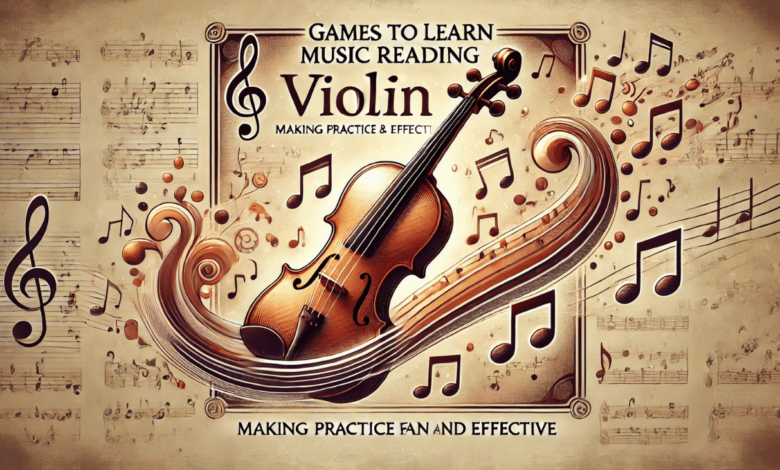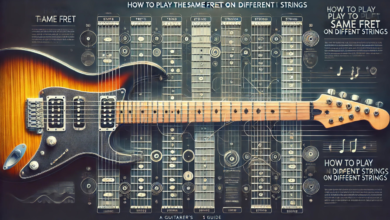Games to Learn Music Reading Violin: Making Practice Fun and Effective

Learning to read music while mastering the violin can be a daunting task for beginners, but incorporating fun and interactive elements can make the process more enjoyable. One effective way to enhance music reading skills is by using games specifically designed to help violinists learn to read music. These games not only make practice more engaging but also accelerate progress by reinforcing key concepts in a playful and memorable way. In this article, we’ll explore several games to learn music reading violin, helping you improve your musical knowledge while having fun.
Name That Note on the Violin
One of the most fundamental skills a violinist needs to develop is the ability to read music notes. “Name That Note on the Violin” is a game that focuses on note recognition in the treble clef, which is essential for reading music. Players are shown notes on a staff and are asked to identify them by name. Once they have identified the note, they also determine which finger and string to use when playing the note on the violin. This game is perfect for beginners, helping them become familiar with note names and finger placements without feeling overwhelmed. It can be played in various positions on the violin, starting with the first position and progressing to higher positions as the player improves. Regular practice with this game will make note recognition second nature.
Note Recognition Bingo
Bingo is a classic game that can be easily adapted for learning music. “Note Recognition Bingo” is one of the best games to learn music reading violin, especially for young or beginner players. In this game, the player has a bingo card with various notes written on it. As the teacher or a fellow player calls out or plays the notes, the player marks them off on their bingo card. This helps reinforce the connection between the note names and their locations on the violin’s fingerboard. It’s a fun and interactive way to practice note recognition and can be played alone or in a group. As players become more familiar with the notes, the game can be adapted to include sharps, flats, and even more complex musical symbols.
Rhythm Clapping Game
Understanding rhythm is just as important as reading notes for any musician, especially for violinists. The “Rhythm Clapping” game is designed to improve rhythmic skills in a fun and interactive way. The basic concept is simple: the teacher claps a rhythm, and the player must repeat it. This helps develop a strong sense of timing and rhythm, which is crucial for accurate music reading. As the player progresses, the rhythms can become more complex, incorporating different note values like eighth notes, triplets, or syncopated rhythms. This game can also be made more interactive by asking the player to clap along with a violin piece, which reinforces the relationship between rhythm and melody. The more the player practices, the better they will become at translating rhythms from the page to their instrument.
Sight-Reading Challenge
Sight-reading is an essential skill for every musician, and it’s especially important for violinists, who often perform music they’ve never seen before. The “Sight-Reading Challenge” is a game that challenges players to read and play music they are not familiar with. This game involves choosing a new piece of music that the player has never seen and giving them a set amount of time to review it. After the time is up, the player must perform the piece as accurately as possible. This game is great for improving both sight-reading speed and accuracy, and it helps players develop confidence in performing unfamiliar music. As players progress, they can increase the difficulty of the music they are asked to sight-read, making the challenge more rewarding and helping them become more adept at interpreting new music.
Music Memory Game
The “Music Memory Game” is a fun and simple game designed to enhance both musical memory and note recognition. In this game, players are shown pairs of notes or musical symbols and must match them up by memory. This is particularly useful for players who are working on learning to read notes and understand musical symbols. For example, a player may be shown two cards—one with a quarter note and one with a half note—and must match them correctly based on their value. As players advance, more complex musical concepts can be added, such as matching notes to their corresponding finger positions or identifying intervals. This game helps reinforce the connection between visual symbols on the page and their physical application on the violin.
Scale Relay Race
One fun way to practice scales while reading music is through a “Scale Relay Race.” This game involves practicing a series of scales in quick succession, with each player or participant playing a different scale or section of a scale. The goal is to play the scales as accurately and quickly as possible, turning a potentially monotonous practice session into a competitive and exciting activity. For players focusing on improving music reading, this game helps reinforce familiarity with different key signatures, scales, and fingerings. It’s also a great game for group practice, as it encourages teamwork and friendly competition.
Interval Identification Challenge
Intervals are crucial for understanding music, as they define the distance between two notes. In the “Interval Identification Challenge,” players are asked to identify intervals between two notes played either on the violin or presented in written form. This game helps players develop a deeper understanding of music theory while improving their ability to recognize intervals both visually and aurally. The game can start with simple intervals like seconds and thirds, gradually progressing to more complex ones like sixths and octaves. The ability to quickly identify intervals is essential for violinists when reading music, as it aids in finger placement and overall sight-reading accuracy.
Conclusion
Incorporating games to learn music reading violin is a fantastic way to make learning more enjoyable and effective. Whether it’s improving note recognition with a game like “Name That Note” or developing rhythm skills with “Rhythm Clapping,” there’s a game for every aspect of music reading. By practicing regularly and playing these fun and interactive games, violinists can improve their music reading skills, enhance their technical abilities, and make learning the violin a more exciting and rewarding experience. So why not add a little playfulness to your practice sessions and start using games to learn music reading violin today?



